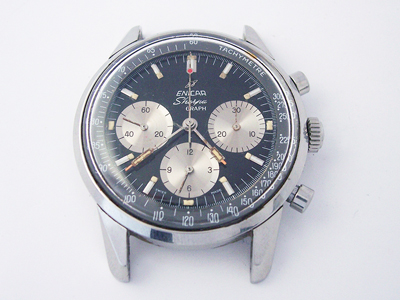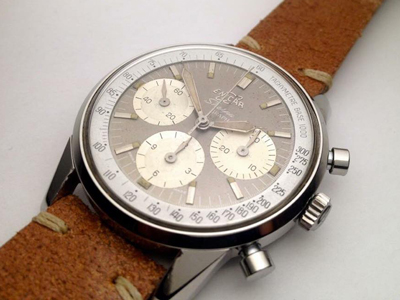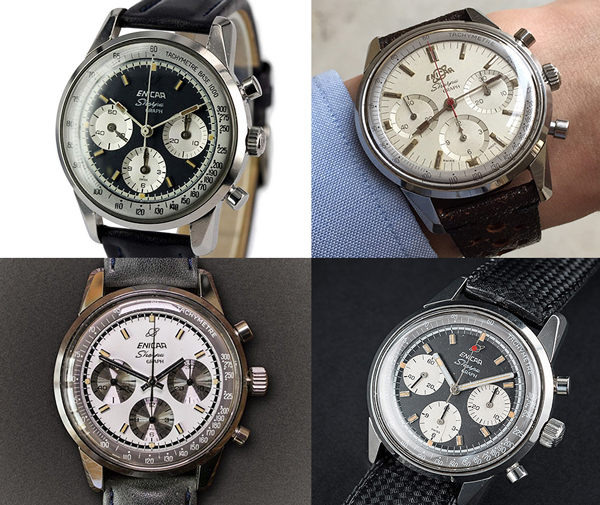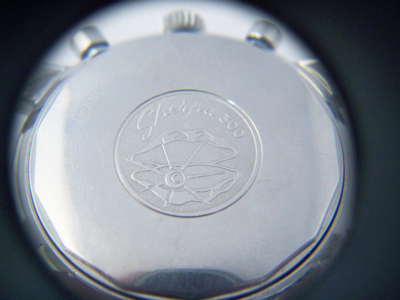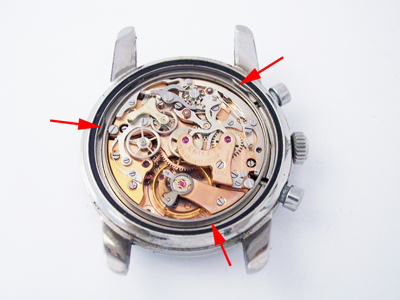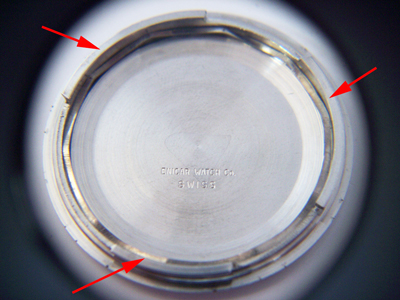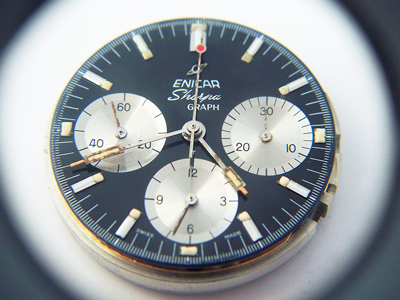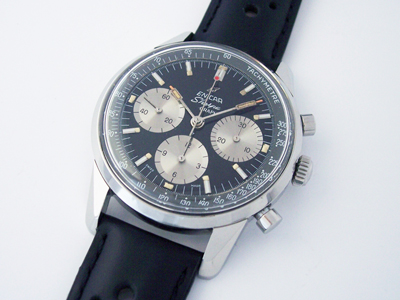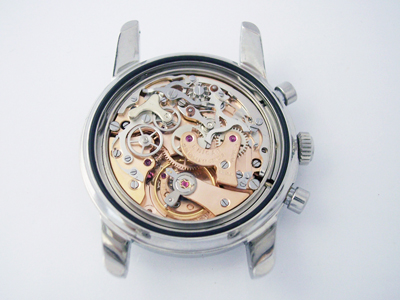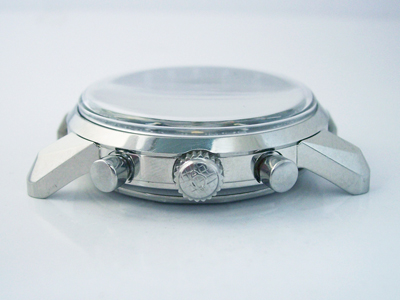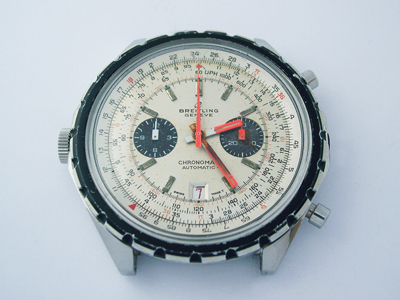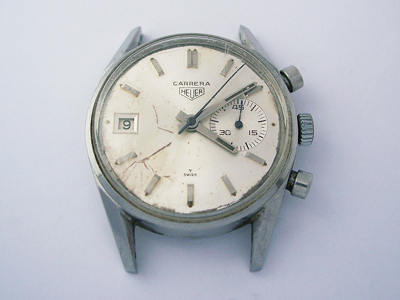Another Valjoux powered vintage chronograph on the blog, this time it’s an Enicar Sherpa Graph.
(Click pictures to enlarge)
I’ve written about a Sherpa model in the past, the Sherpa Dive but the Sherpa Graph is a stalwart of the range and is now very popular with vintage watch collectors.
First introduced in 1960 the Sherpa Graph went through many changes during its production run and was made with a variety of dial and hand combinations. Changes were also made to the dial and tachymetre bezel over the years, so with such a wide range of variations it can be difficult to accurately date a Sherpa Graph.
The earliest model had lumed sword shaped hands and similarly shaped subdial hands. Only a handful of these are thought to exist so you’ll be very lucky to find one these days.
Production moved quickly to the paddle shaped hands that you see on the watch in this post and over the next few years watches were produced with white, silver and black dials. By the late 1960’s models were being produced with more substantial baton shaped hands though still with an array of chronograph hands combinations.
Here are a few of the model iterations.
For more comprehensive coverage of the topic I’d recommend checking out this excellent Collector’s Guide from the website TheSpringBar which gives a full overview of the Sherpa Graph and Enicar’s other Graph models.
Getting back to the subject of this post it’s worth spending a few minutes describing the case on this watch as it isn’t a typical screwback as you might expect. All of Enicar’s Graph model watches used the Super Compressor case designed and patented by Ervin Piquerez S.A (EPSA).
Super Compressor cases were made by EPSA from the 1950’s until the 1970’s and were used by many watch manufacturers including Longines, Jaeger-LeCoultre, Hamilton, Lip, Benrus, Universal Geneve and Tissot to name just a few.
Turning the watch over the caseback has some nice decoration in the centre, “Sherpa 300” in script (300 being the water resistance in feet) and a picture of an oyster with a pearl, denoting the ‘Seapearl’ for which Enicar are also well known.
With the caseback removed you can see two of the three “loops” of thick wire protruding from the inside of the case…
…and on the inside of the caseback are three corresponding raised sections, each with a protruding lip on the outside.
When the caseback is placed inside the case in the correct orientation and turned through 75 degrees, the lips on the caseback hook under the wire loops securing the caseback in place. Simple but effective – though it can still catch out anyone who is unfamiliar with this type of case construction.
The watch arrived in running condition but with a few cosmetic issues to address. Moisture had found its way into the case, most probably via the edge of the crystal and had rusted the hands. Rust had also permeated the crystal itself, the evidence of which you can see over the ‘M’ in ‘Tachymetre’ in the first picture. As with this Dodane that I wrote about a couple of years ago, when an acrylic crystal ages, it shrinks and small cracks form in the body allowing rust and dirt to creep up into the acrylic and stain the crystal. A replacement is the only option in such cases.
With the watch out of the case the extent of the rust on the hands was clear to see. The main hands had tarnished on the shafts and around the lume plots and the subdial and sweep hands had also been affected. Thankfully the dial had not been damaged and the original lume and paint was all still intact.
The first step was to carefully remove the hands and put a layer of clear binder on the back of the hour and minute hands to secure the lume. The next step was to carefully scrape away all the surface rust which requires a very steady hand as one slip into the lume or paint and it would surely break away.
As mentioned in previous restorations, it isn’t possible to remove the surface pitting in the chrome plate once rust has set in but with care decent results can still be achieved.
The movement inside this watch is the ever popular Valjoux cal. 72. The one in this watch, although it hadn’t been serviced for some time, was still in good condition and needed no more than a routine service this time.
So with the movement serviced and the cosmetic issues addressed, the case was cleaned and a new crystal fitted, after which the watch could be rebuilt.
A quick side profile shot shows that this watch still has its original crown, cross hatched as is typical for most EPSA Super Compressor cases but also branded with the Enicar logo too.
This style of crown was only used on the later Sherpa Graph models, the earliest ones simply had a plain cross hatched crown. It’s a small detail, but well worth noting when you’re looking for original features.
Rich.
** Many thanks to David Pearce for letting me feature his watch on the blog. **

